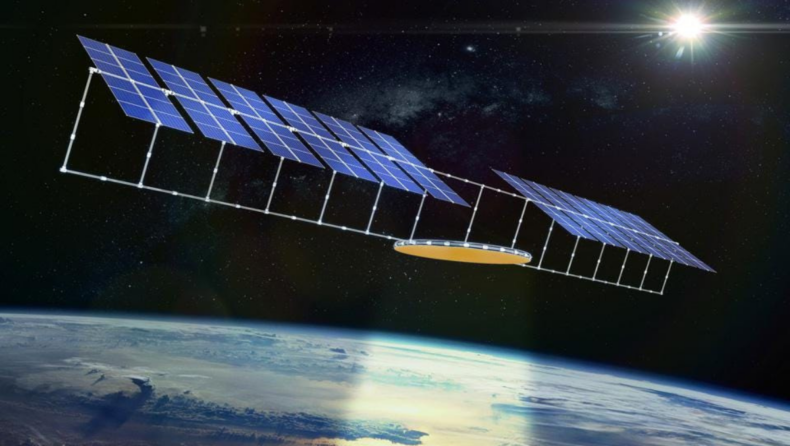
A solar technology manufacturer is looking to deploy floating solar panels in space to harness the sun’s energy.
Due to rising concerns about climate change, civilization is moving toward renewable sources of energy like solar energy, wind energy, wave energy etc. Even though quite cheap and heavily advanced, harnessing solar energy still poses a great challenge because of the non-availability of the sun for 24 hours. Hence, this has prompted many companies to wonder whether we can deploy solar panels in space, in the earth’s orbit that receive sunlight all around the year.
Following on the cues from the scientists, Longi Green Energy Technology Co., the world’s largest manufacturer of solar technology is planning to send solar panels into space in order to test the feasibility of harnessing the sun’s power in orbit and transmitting it back to earth.
Why send solar panels to space?
An unhindered supply of solar energy is important to produce a constant stream of electricity from solar panels. The energy needs of the world are on a rise given that more than ever, a large portion of the world is continuously aiming toward growth and development.
Hence, to cater to this rising energy needs, the companies producing solar energy are debating whether to send solar panels to the earth’s orbit in order to harness solar energy without delays.
If successful, these solar panels can transmit back electricity to earth 24/7, which will ease the burden on the scarce natural resources that are left on the planet. It can heavily reduce the cost of electricity and make it universally available.

What are the hurdles in the solar space panels program?
The biggest issue surrounding this ambitious program is the feasibility of this mission. As known, a plethora of satellites and the Internal Space Station itself is deployed in the earth’s orbit. Moreover, the remains from the previous space missions also orbit in the earth’s orbit k own s space junk. This has really crowded the orbit.
Read More: China Discovers A Rare Material in Lunar Rocks.
Hence, deploying costly solar panels might be risky. Moreover, there is no officially decided orbit or path for the floating solar panels. It is still ambiguous whether the solar panels will be successful to transmit back electricity without any major power losses. The technique for transmission is still unauthorized.
How does this Solar Space Panel Program work?
Longi Green Energy Technology Co. has established a laboratory focused on this task only. It could potentially lead to collaboration between China’s sprawling and advanced space sector and the ambitious Space Programs. It is not to be forgotten that China recently announced the discovery of new material from lunar rocks obtained by China’s lunar retriever mission.
This mission is based on the infamous report by Chinese researchers at Shaanxi’s Xidian University. They claimed that in the year 2021, they had successfully tested a technological model designed to transmit back electricity to the earth from space ower orbits. Basically, the panels will capture sunlight from the orbit, convert it into microwave beams and send them back to a designated receiver station. Here, at the station on the Earth, the beams will be converted into electricity.
According to some official reports, this program’s cost for beta testing will be approx $ 100 million. Though, it is worth noting that China is not the first country to aim for space solar energy. Earlier as well, scientists at the California Institute of Technology launched such programs. Moreover, nations including Japan, Russia, and India are also considering investing in such research.
It will be interesting to see how it turns out. There has been an increase in voices bemoaning the increased use of resources by Humanity. This has prompted a flurry of solutions, mostly by the private sector. If these missions turn out to be successful, humanity will truly take a big leap toward its future.













